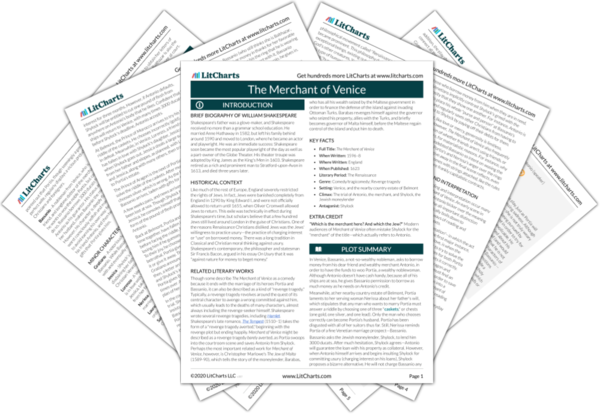Instances of reading and interpretation occur many times in The Merchant of Venice. An early scene in which Shylock and Antonio bicker over the meaning of Biblical scripture shows that the all-important distinction between Jews and Christians basically boils down to interpretive differences—different ways of reading and understanding a shared heritage of texts.
The play also stages "scenes of interpretation"—in which the act of reading becomes a dramatic event. The first major instance, connected to the themes of both law and love, is when the Prince of Morocco becomes the first suitor to try to solve the riddle of the caskets, with major consequences for both Portia and himself depending on whether he interprets it correctly. This scenario repeats with both the Prince of Aragon and Bassanio. The courtroom scene, in which Portia must find an alternative way to read and understand the law in order to save Antonio's life, similarly turns an act of interpretation into a highly dramatic game with very high stakes. The Merchant of Venice shows how the practice of reading (and not just reading literature) is woven into the structures of prejudice and intolerance, love, law, and justice—how it is central to everyday life.
Reading and Interpretation ThemeTracker

Reading and Interpretation Quotes in The Merchant of Venice
A stage, where every man must play a part;
And mine a sad one.
Or in the heart or in the head?
How begot, how nourished?
Reply, reply.
It is engender'd in the eyes,
With gazing fed; and fancy dies
In the cradle, where it lies.
Let us all ring fancy's knell;
I'll begin it – Ding, dong, bell.
Some mark of virtue in his outward parts.
















